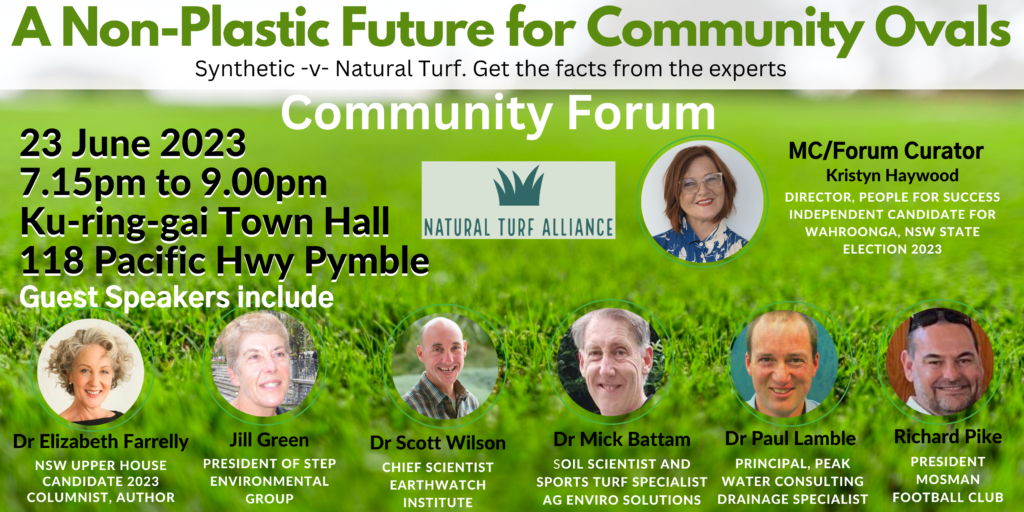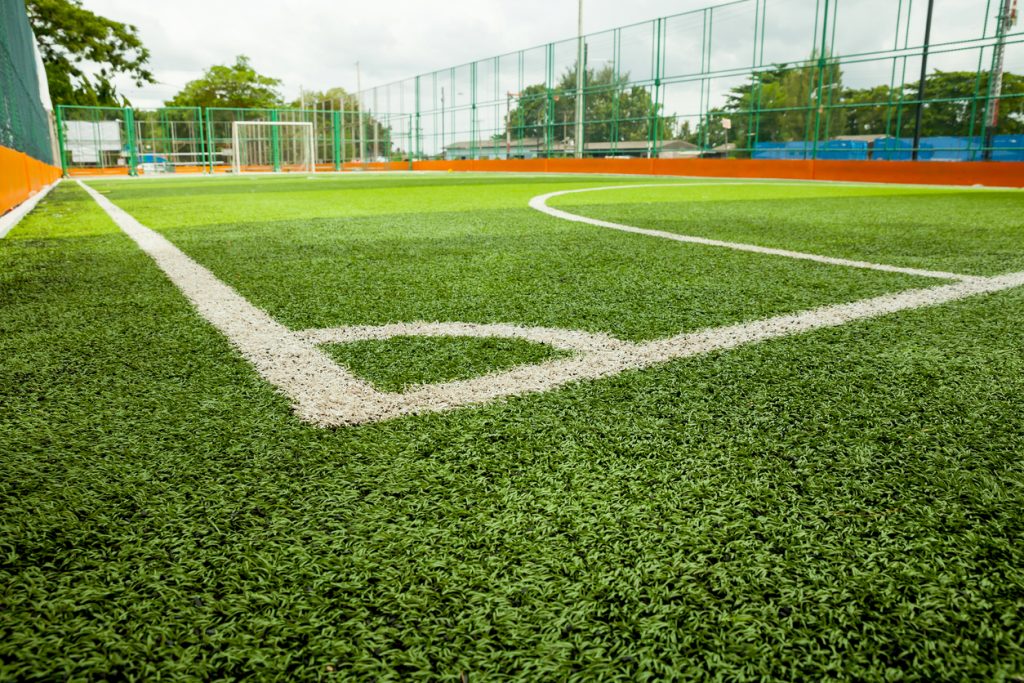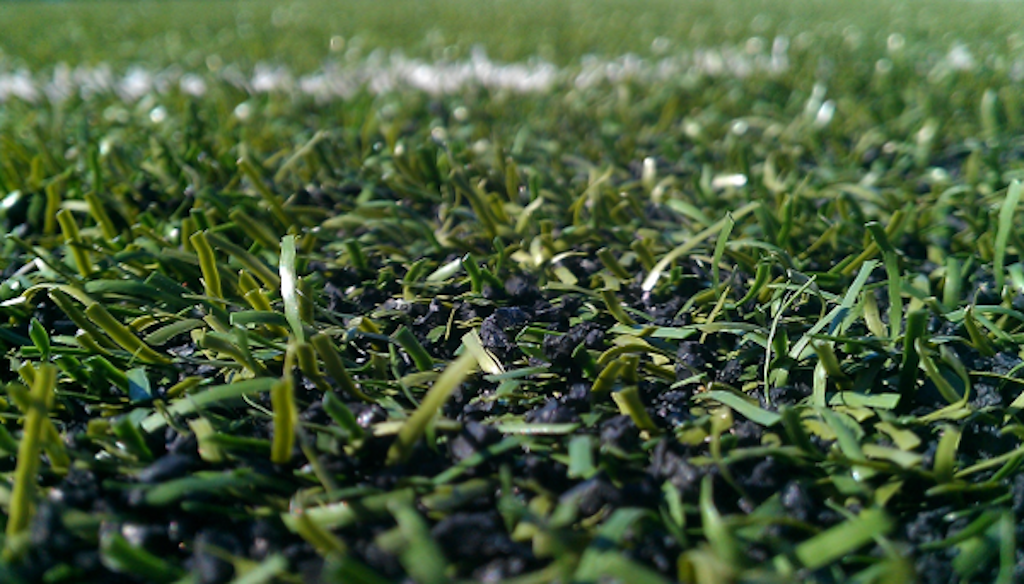The environmental impacts of artificial turf worth considering before rolling it out
By Penny Travers | 5th July 2023 | ABC News | Click here to view the article
With your lawn turning brown from the winter frost and an El Nino weather event on the horizon, you may find yourself considering artificial turf to keep your lawn or front verge looking green.
It’s an increasingly popular choice, particularly in newer suburbs where block sizes are smaller.
But while synthetic grass offers an even, green surface that requires little maintenance, it comes with a big environmental price tag.
Here are some of the environmental impacts of artificial turf worth considering before you roll it out in your own backyard.
Burning hot in summer
In summer, fake turf gets hot. Very hot. So hot in fact, that Sebastian Pfautsch, an associate professor in urban management and planning at Western Sydney University, warns the surface can give babies and young children “second or third-degree burns”.
Associate Professor Pfautsch was one of more than 30 experts who contributed to an independent review of the impacts of synthetic turf in public open spaces by the New South Wales chief scientist and engineer.
“This material on a sunny day, with let’s say 30 degrees Celsius in the sun unshaded, will be about 80 to 90 degrees hot,” he said.
“Compare that to natural turf, which will be just slightly above the temperature, meaning slightly above 30 degrees.
Not only can it be burning hot to touch, fake turf also radiates heat, making you and your home hotter.
“You get radiant heat so your thermal comfort is impacted negatively and then you also have, from the combination of the sensible heat flux and the warmer air temperatures, warmer air around your home,” Associate Professor Pfautsch said.
“That means your whole house is warmer, your walls are warmer, your windows are warmer, everything is warmer, the air intake for your air conditioning system is warmer — you need more energy to cool that down.
The heat impact goes beyond just having a warmer microclimate around your home.
“You may think it’s only me having a bit of synthetic turf but it’s now 20 other neighbours and then of course, when you add this, it has a collective impact on your suburb microclimate where it gets warmer,” Associate Professor Pfautsch said.
“Collectively the whole suburb will be warmer which has impacts on night-time temperatures, but also on the environment where certain critters just need certain temperatures and certain plants need certain evolutions of day-night temperatures.
Unsustainable life cycle
As the name suggests, synthetic turf comprises of synthetic fibres typically made from nylon or polypropylene and connected to a backing material, all of which came from crude oil.
The lifespan of artificial turf depends on how it’s installed, maintained and used, but it tends to be about 10 years, though some manufacturers of newer products say it can last upwards of two decades.
When it does reach the end of its useful life, unlike some other plastics, artificial turf is difficult to recycle due to contaminations, colours and stabilisers within the material.
“What we’re finding in the US, is a lot of the artificial turf that is being replaced with other surfaces is just ending up in landfill which is not a good end for these products,” John Ting, Assistant Professor at the University of Canberra’s Faculty of Arts and Design, said.
“In terms of the life cycle for these kinds of plastic, it is not really a very sustainable thing.
“Whereas things like tiles, or stone paving, or concrete, even gravel, a lot of that can actually be incorporated into other materials or can actually be recycled themselves.”
Professor Mark Howden, director of the Institute for Climate, Energy and Disaster Solutions at the Australian National University, says the greenhouse gas component also needs to be considered.
“Normal grass can absorb a bit of carbon, compare that with artificial grass or asphalt or concrete, those latter ones have a big greenhouse gas footprint,” he said.
Microplastics in waterways
While there is a wide range of artificial turf products on the market with varying composition and durability, synthetic fibres can break off and end up in waterways, especially in periods of heavy rainfall.
“Because they come into contact with feet, because people walk over them and so forth, and because they’re out in the weather, what we tend to get is bits of plastic that are actually falling off the artificial grass itself and getting into our waterways,” Assistant Professor Ting said.
Infill is usually spread over the turf to help the grass blades stand up and keep the turf flat.
In backyards, that infill is often silica sand which has sharp edges that can contribute to the grass blades breaking off.
Granulated rubber or crumb rubber, usually made from old car tyres, is also used as an infill — particularly on sporting fields.
“That just cries for disaster,” Associate Professor Pfautsch said. “Now you’re not only having the natural disintegration of the green material, but you’ve introduced something that’s even smaller and loose that just goes everywhere. “You can find this material, many, many, many metres away from the fields in parks where it’s just piling up. It just starts to wander off.
“And there are studies in that report … that describe the impact of that on aquatic environments because it starts to enter the food chain.”
Lack of biodiversity
Artificial turf doesn’t just impact the environment above the ground, but also the carbon in the soil and the living systems below.
“Artificial turf doesn’t have an ecology like grass does,” Assistant Professor Ting said.
“All sorts of microbes, insects and other things actually live in the grass and in the soil around the grass.
“Natural grass and planted matter does actually promote biodiversity and does give back to the soil and make it stronger, more fertile and so on. Artificial grass doesn’t allow this to happen.”
Associate Professor Pfautsch describes synthetic turf as a biodiversity “blocker”.
“Once you start reducing the gas exchange between the atmosphere and the soil it has a huge impact on all the soil fauna, the critters that live in the soil, which is a huge storage of carbon,” he said.
“All of that is lost because you’re basically cutting off their supply pipelines for gas exchange.”
Lawn alternatives
The good news is there are some natural alternatives to artificial turf that don’t necessarily require the time and effort of a well-manicured traditional lawn and still look pleasant during dry times.
“Native Australian grasses make wonderful turfs. You can even let that flower before you mow it and that comes with biodiversity benefits,” associate professor Pfautsch said.
“There will be insects that will be attracted to that, that also then, when you look at food chains, attract birds, attract this and attract that.”
A side path of a house with a gate, with stepping stones surrounded by leafy green and small purple flowers
For those who don’t want to maintain a natural lawn, Professor Howden suggests planting ground covers and shrubs, or growing a cottage garden.
“Increasingly there are some really great options. Walk around your suburbs and see where people have made those choices and how attractive they can be,” he said.
And if native grass and shrubs won’t work for your backyard, you could always lay down some bark or wood chip.
“You can just have bark chips like mulch over your earth, and that doesn’t heat up as much as artificial turf and does keep the ground healthy,” Assistant Professor Ting said.










